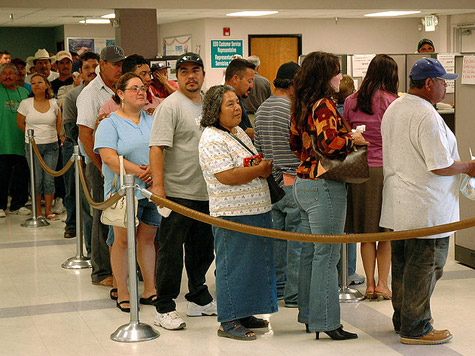
Tomorrow morning, at 8:30am EDT, every political and financial analyst will be focused on the Labor Department and its June Jobs Report. After a decent 1st Quarter of hiring, over the past two months, America’s jobs’ engine has stalled, creating just 77k and 69k jobs in April and May. Tomorrow’s report will either confirm the economic slowdown or show that the last two months were an aberration and economic recovery remains on-track. Moreover, tomorrow’s report will tell us a lot about the state of the Presidential race. A couple more reports like April and May and Obama has a very tough road to reelection.
With the election just four months away, the next jobs’ reports will be spliced, diced and parsed by partisans on both sides of the aisle. If you torture statistics long enough, they’ll confess to anything. But, putting aside the spin, the numbers do provide a valuable glimpse of what’s going on with the economy. Here are some items to watch.
April and May’s jobs reports were widely seen as very bad economic news. Our economy needs to produce 125-150K new jobs a month just to keep up with population growth. Anything less than that, and our economy is losing ground. Even though April and May showed positive job growth, because the growth was half the needed number, the ranks of the unemployed increased. To reclaim the millions of jobs lost at the end of 2008 and throughout 2009, we’ll need several months of 300k+ new jobs.
Most economists seem to be predicting tomorrow’s report to show a net gain of around 90k jobs. ADP, the payroll firm, released a report today saying that the private sector created 176k jobs in June. This got the media and some Wall Street analysts excited that tomorrow’s report may surprise on the upside. This is very unlikely.
First, initial jobless claims have been disappointing throughout June. The rolling four-week average is around 385k new claims for unemployment benefits a week. Claims around 400k a week generally signal net job losses, while we need to be below 350k claims to show real job growth. The manufacturing sector recently hit a three-year low and the manufacturing index in virtually every industrialized country also recently posted significant declines. And, the GDP forecast has been revised–again–downwards. This, and continued weak consumer spending and income growth makes it very hard to see any kind of spike in hiring. It is hard to imagine employers beefing up hiring in the face of month-long bad economic news.
Also, ADP has in recent months overshot the official BLS number. In May, ADP estimated that the private sector added 133k jobs, while BLS reported 82K private sector jobs. In April, it had estimated 119k to the BLS’s around 80k. But, even if ADP gets this number right, it would still signal an economy just barely treading water.
Unemployment Rate
The current unemployment rate is 8.2%. This represents the percentage of people who are unemployed AND actively looked for work over the last month. It doesn’t include those who would like a full-time job but are working part-time nor those that have become discouraged and given up actively looking for work. If we included these people, as we did throughout the 80s, the unemployment rate would be over 16%. Unless tomorrow’s jobs report shows a hiring binge or thousands more people leave the labor force, this number will not fall. If tomorrow’s jobs’ gain is below 100k, the rate may even nudge upwards.
Hours Worked
For much of the past year, the average number of hours worked has hovered around 34 hours a week. This is a good measure of possible future hiring demand. There is generally little demand for new hiring until this number gets closer to 40 hours a week, which triggers overtime pay. We will not see robust hiring until this number increases.
Number of long-term unemployed
In May, the number of long-term unemployed, individuals unemployed for greater than 27 weeks, increased. This population makes up over 48% of the unemployed. This is the real measure of economic pain–a society stuck with a large class of people essentially permanently unemployed isn’t healthy.
We’ll have analysis of tomorrow’s jobs report all day on Friday. The reports over the next 2-3 months will tell us more about the November election than any polling. At some point in late summer, the public’s “mind” will be set on the economic picture. But, there is a danger in putting too much weight into the monthly changes in the labor market. Even a good number tomorrow doesn’t negate the fact that record numbers of Americans are on food stamps or the number of Americans in poverty is at a modern-day record.
That’s the news that shouldn’t be lost in the monthly crunch of numbers. Because, behind each of those stats is a real story.

COMMENTS
Please let us know if you're having issues with commenting.